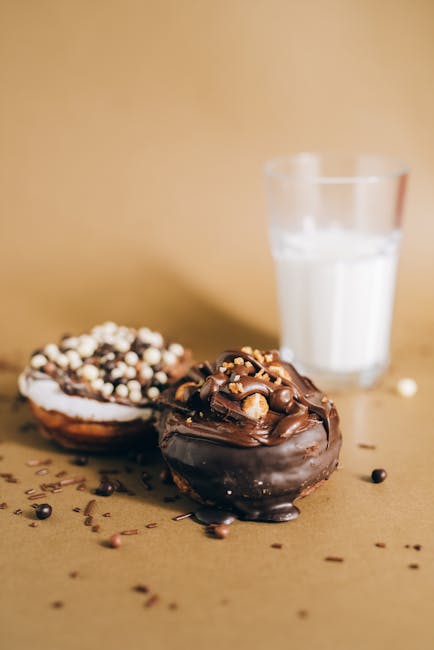Introduction
The world of pastries offers a delightful array of options, and two contenders often find themselves in the spotlight: the cronut and the donut. While both promise a sweet and satisfying experience, they are fundamentally different in their creation, texture, and flavor profile. This article delves into the key distinctions between these two popular treats, helping you understand what sets them apart and choose the perfect pastry for your craving.
Cronut vs. Donut: Unveiling the Differences
Dough Composition and Preparation
One of the most significant differences lies in the dough itself.
- Donut: Typically made with a yeast-based or cake-based dough. Yeast donuts are light and airy, while cake donuts are denser and more crumbly.
- Cronut: Crafted from laminated dough, similar to that used for croissants. This involves layering dough with butter and folding it multiple times, creating hundreds of thin, flaky layers.
The Frying Process
Both cronuts and donuts are fried, but the effect on the dough is vastly different.
- Donut: Fried until golden brown and cooked through. The frying process creates a slightly crisp exterior while maintaining a soft interior.
- Cronut: The laminated dough puffs up and separates during frying, creating distinct layers with a supremely crispy exterior. The inside remains slightly doughy and incredibly tender.
Texture and Mouthfeel
The preparation techniques result in markedly different textures.
- Donut: Offers a relatively uniform texture, either light and airy (yeast) or dense and crumbly (cake).
- Cronut: Delivers a complex texture experience. You get a shatteringly crisp exterior, followed by layers of flaky pastry and a soft, almost chewy interior. This textural contrast is a defining characteristic of the cronut.
Flavor Profile and Fillings
While both can be flavored and filled in countless ways, some trends are more common.
- Donut: Often glazed, frosted, or topped with sprinkles. Fillings range from classic jelly and cream to more innovative flavors.
- Cronut: Typically filled with a flavored cream or pastry cream. They are frequently glazed or rolled in sugar and often feature a distinctive glaze or topping that complements the filling. The limited-edition nature of cronut flavors is part of their appeal.
Calories and Nutritional Value
Let’s be honest, neither is a health food! However, there are slight differences.
- Donut: Calorie count varies widely depending on size, type, and toppings. Cake donuts are often higher in fat than yeast donuts.
- Cronut: Generally higher in calories and fat due to the rich, buttery laminated dough. The multiple layers of butter contribute to a higher fat content compared to most donuts.
Conclusion
In the battle of cronut vs. donut, there’s no clear winner. The “best” treat depends entirely on personal preference. If you crave a classic, comforting, and familiar pastry, the donut is a solid choice. However, if you’re looking for an indulgent, textural adventure with layers of buttery goodness, the cronut offers a unique and unforgettable experience. Both pastries have earned their place in the dessert hall of fame, offering sweet satisfaction in their own distinct ways.
